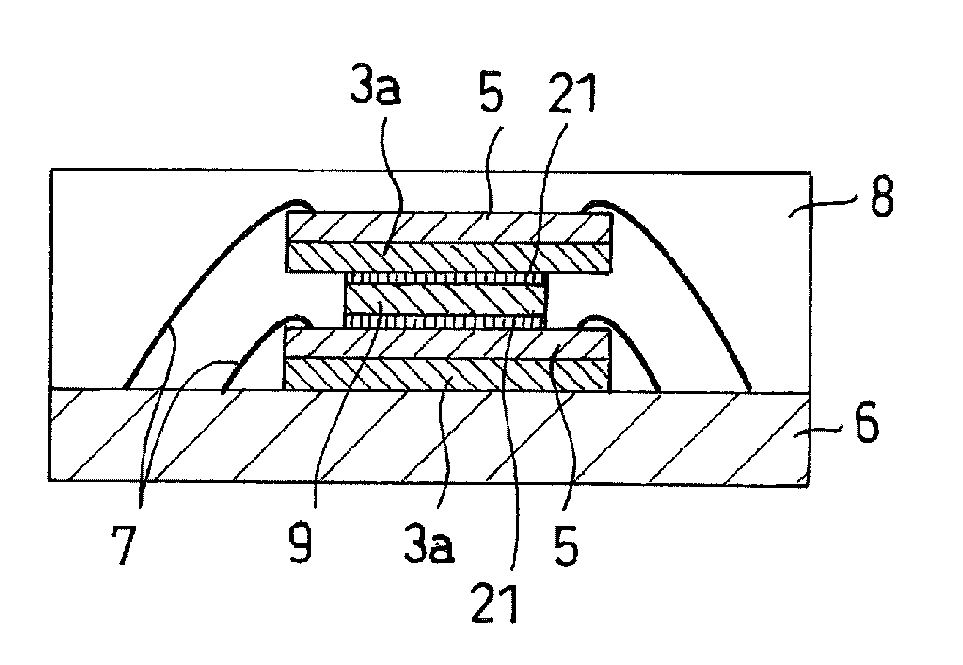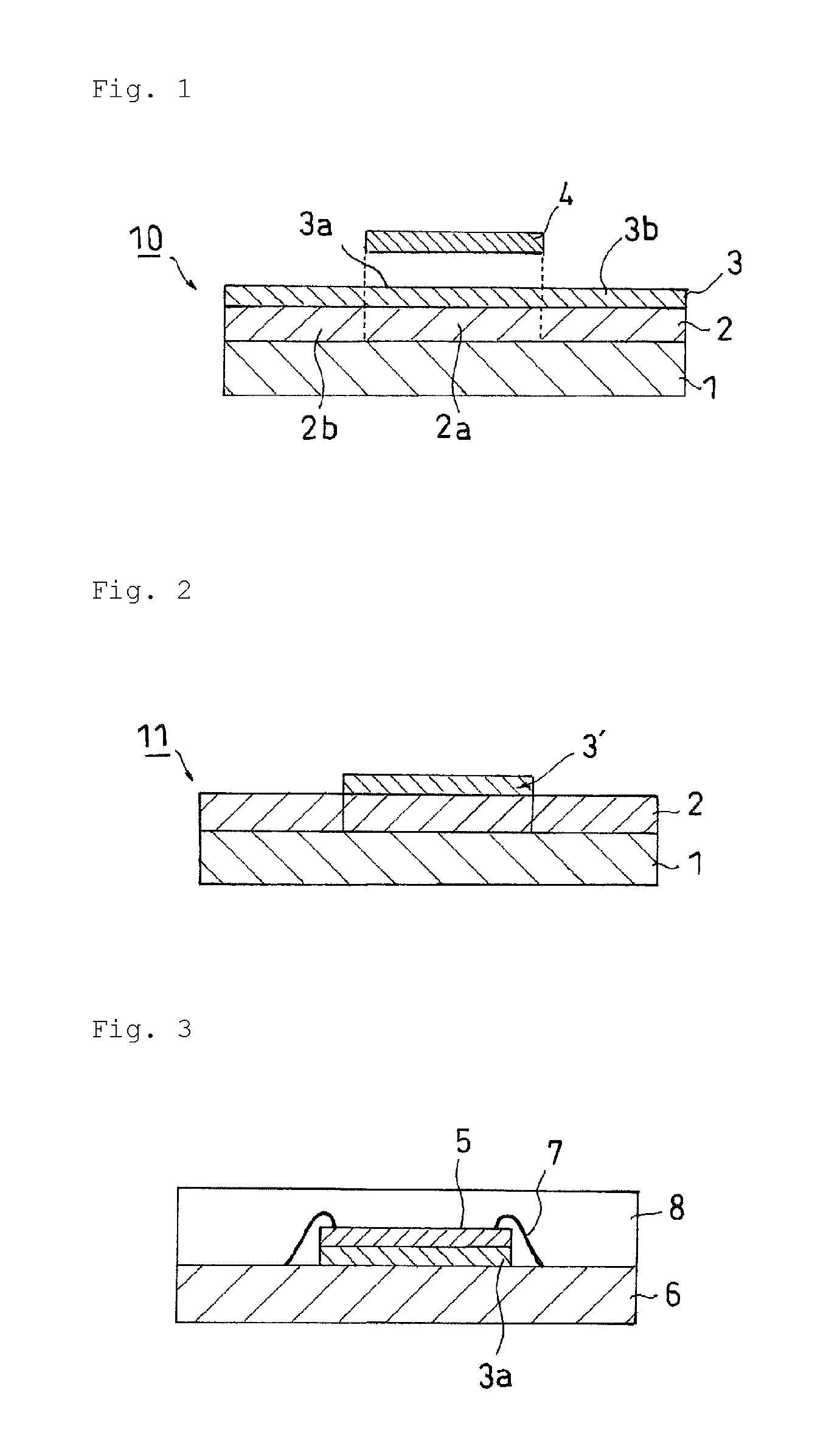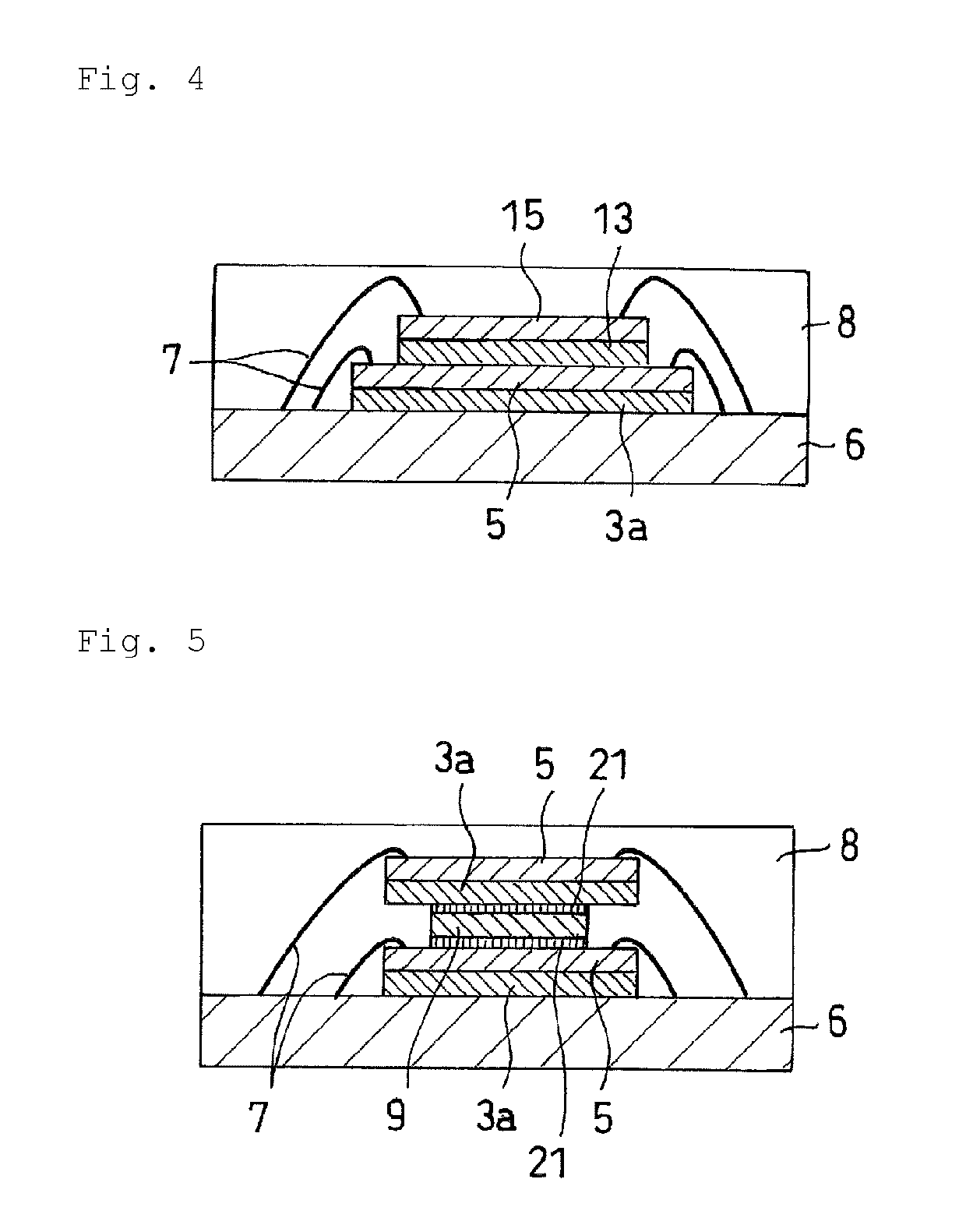Die-bonding film and use thereof
- Summary
- Abstract
- Description
- Claims
- Application Information
AI Technical Summary
Benefits of technology
Problems solved by technology
Method used
Image
Examples
example 1
[0133]An adhesive composition having a concentration of 23.6 wt % was prepared by dissolving 100 parts of an acrylic acid ester based polymer (manufactured by Negami Industry Co., Ltd., 1.9 mol % of glycidyl acrylate) containing acrylonitrile-ethyl acrylate-butyl acrylate as a major component and having an epoxy value of 0.18, a glass transition point (Tg) of 30° C., and a weight-average molecular weight of 1,100,000 as the glycidyl-group-containing acrylic copolymer (a) and 17.5 parts of phenolic resin (manufactured by Meiwa Kasei Co., Ltd., “MEH7651”) as the phenolic resin (b) into methyl ethyl ketone.
[0134]This adhesive composition was applied onto a release treatment film, as a peeling-off liner, made of a polyethylene terephthalate film having a thickness of 50 and which was subjected to a silicone release treatment, followed by drying at 130° C. for 2 minutes. By this process, a die-bonding film having a thickness of 25 μm was prepared.
example 2
[0135]A die-bonding film was prepared in the same manner as in Example 1 except that an adhesive composition having a concentration of 23.6 wt % was prepared by dissolving 100 parts of an acrylic acid ester based polymer (manufactured by Negami Industry Co., Ltd., 2.3 mol % of glycidyl acrylate) containing acrylonitrile-ethyl acrylate-butyl acrylate as a major component and having an epoxy value of 0.22, a glass transition point (Tg) of 15° C., and a weight-average molecular weight of 800,000 as the glycidyl-group-containing acrylic copolymer (a) and 12.5 parts of phenolic resin (manufactured by Meiwa Kasei Co., Ltd., “MEH7851”) as the phenolic resin (b) into methyl ethyl ketone, and further dispersing 40 parts of spherical silica (manufactured by Admatechs Co., Ltd., “SO-25R”) having an average particle size of 500 nm.
example 3
[0136]A die-bonding film was prepared in the same manner as in Example 1 except that an adhesive composition having a concentration of 23.6 wt % was prepared by dissolving 100 parts of an acrylic acid ester based polymer (manufactured by Negami Industry Co., Ltd., 4.5 mol % of glycidyl acrylate) containing acrylonitrile-ethyl acrylate-butyl acrylate as a major component and having an epoxy value of 0.42, a glass transition point (Tg) of 15° C., and a weight-average molecular weight of 800,000 as the glycidyl-group-containing acrylic copolymer (a) and 6.5 parts of phenolic resin (manufactured by Meiwa Kasei Co., Ltd., “MEH7851”) as the phenolic resin (b) into methyl ethyl ketone, and further dispersing 40 parts of spherical silica (manufactured by Admatechs Co., Ltd., “SO-25R”) having an average particle size of 500 nm.
PUM
| Property | Measurement | Unit |
|---|---|---|
| Temperature | aaaaa | aaaaa |
| Temperature | aaaaa | aaaaa |
| Temperature | aaaaa | aaaaa |
Abstract
Description
Claims
Application Information
 Login to View More
Login to View More - R&D
- Intellectual Property
- Life Sciences
- Materials
- Tech Scout
- Unparalleled Data Quality
- Higher Quality Content
- 60% Fewer Hallucinations
Browse by: Latest US Patents, China's latest patents, Technical Efficacy Thesaurus, Application Domain, Technology Topic, Popular Technical Reports.
© 2025 PatSnap. All rights reserved.Legal|Privacy policy|Modern Slavery Act Transparency Statement|Sitemap|About US| Contact US: help@patsnap.com



